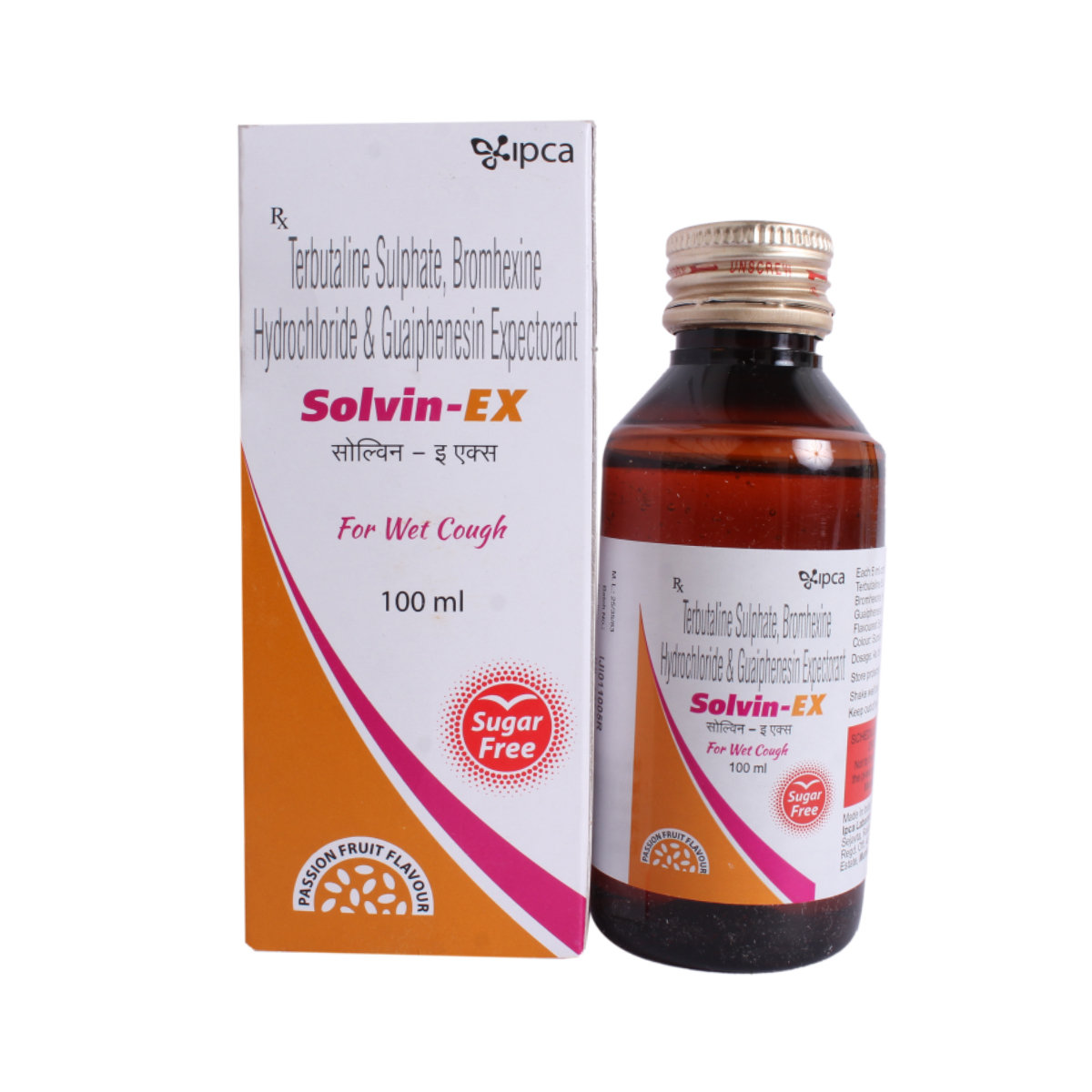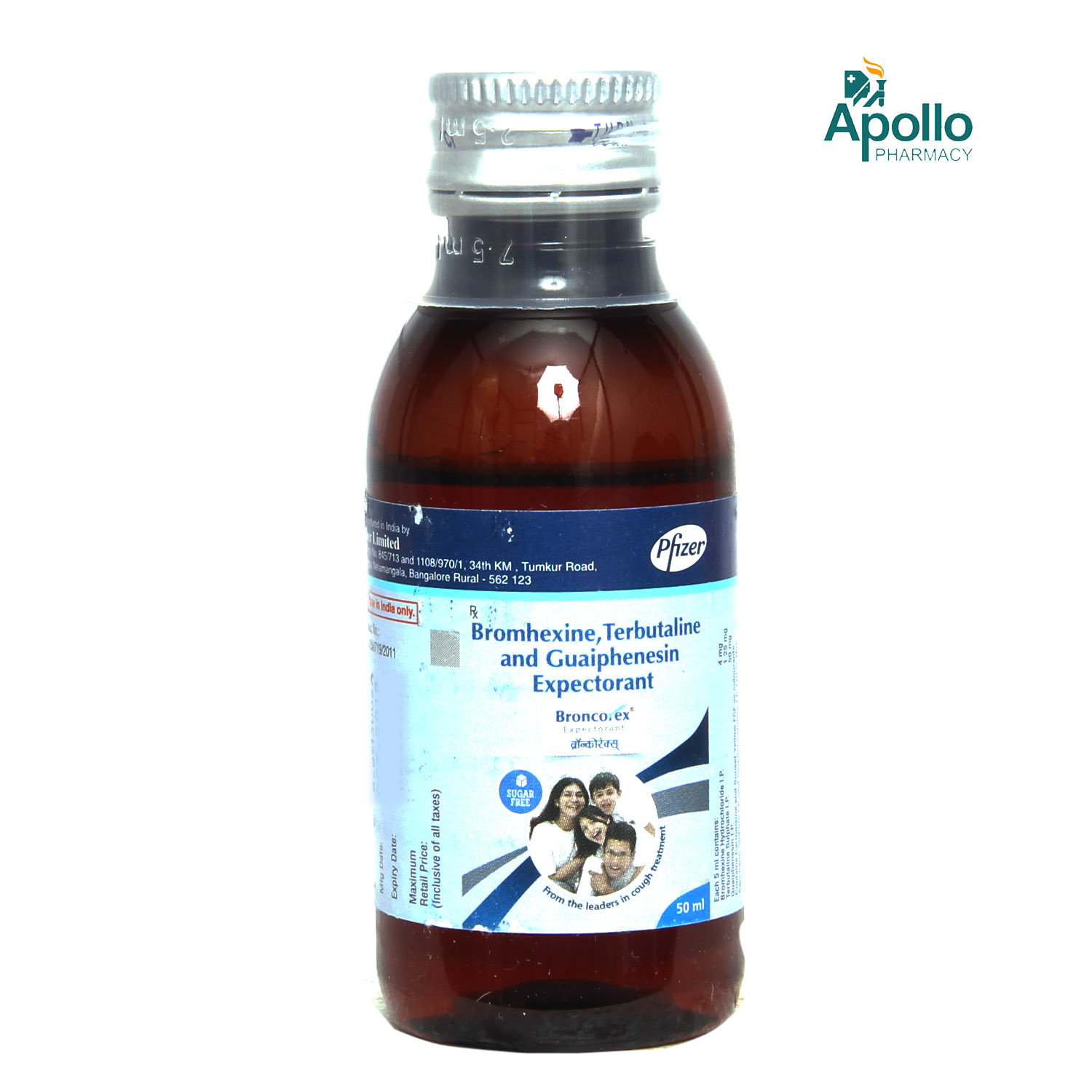Exit Expectorant 100 ml


MRP ₹74
(Inclusive of all Taxes)
₹11.1 Cashback (15%)
Provide Delivery Location
Online payment accepted
 Prescription drug
Prescription drugWhats That
Manufacturer/Marketer :
Consume Type :
Expires on or after :
Return Policy :
About Exit Expectorant
Exit Expectorant belongs to the class of medicine called 'expectorant' primarily used to treat cough associated with mucus. Coughing (dry or productive) is a body's way of clearing irritants (like allergens, mucus or smoke) from airways, thereby preventing respiratory infection. There are two types of coughs, namely: Dry cough and Chesty cough. A dry cough means it's tickly and doesn't produce any vicious or thick mucus, while a chesty cough means mucous or sputum is produced to help clear the airways.
Exit Expectorant is a combination of three drugs, namely Guaiphenesin (expectorant), Terbutaline sulphate (bronchodilator) and Bromhexine hydrochloride (mucolytic agent or cough thinner). Guaiphenesin works by increasing the volume of fluid in the airways, reducing the stickiness of mucus and helping to remove it from airways. Terbutaline sulphate relaxes muscles and widens the airways. Thereby, it makes breathing easier. Bromhexine hydrochloride works by thinning and loosening phlegm (mucus) in the lungs, windpipe and nose. Thereby, it helps to cough out easily.
Take Exit Expectorant as prescribed. Your doctor will recommend how often you need to take Exit Expectorant based on your medical condition. Some people may experience nausea, vomiting, drowsiness, headache, dizziness, skin rash, tremor, stomach upset and fast heartbeats. Most of these side effects of Exit Expectorant do not require medical attention and gradually resolve over time. However, if the side effects persist or worsen, please consult your doctor.
If you are known to be allergic to Exit Expectorant or any other medicines, please tell your doctor. If you are pregnant or breastfeeding, it is advised to inform your doctor before using Exit Expectorant . If you have a history of fits or are suffering from fits, please inform your doctor before taking Exit Expectorant as it may increase the risk of recurrent fits. If you have diabetes, regular monitoring of blood sugar levels is recommended while taking Exit Expectorant . If you have diabetes, fits, high blood pressure, overactive thyroid, stomach ulcers, phenylketonuria (a congenital disability that causes accumulation of amino acid, phenylalanine in the body), kidney, liver or heart problems, please inform your doctor before taking Exit Expectorant .
Uses of Exit Expectorant
Directions for Use
Key Benefits
Exit Expectorant is a combination of three drugs, namely Guaiphenesin, Terbutaline sulphate and Bromhexine hydrochloride used to treat a cough with mucus. Guaiphenesin belongs to the class of expectorants that works by increasing the volume of fluid in the airways, reducing the stickiness of mucus and helping to remove it from airways. Terbutaline sulphate belongs to the class of bronchodilators that relaxes muscles and widen the airways. Thereby, it makes breathing easier. Bromhexine hydrochloride belongs to the class of mucolytic agents (cough/sputum thinner) that works by thinning and loosening phlegm (mucus) in the lungs, windpipe and nose. Thereby, helps to cough out easily.
Storage
Drug Warnings
If you are known to be allergic to Exit Expectorant or any other medicines, please tell your doctor. If you are pregnant or breastfeeding, it is advised to inform your doctor before using Exit Expectorant . If you are suffering from fits (epilepsy) or have a history of fits, please inform your doctor before taking Exit Expectorant as it may increase the risk of recurrent fits. If you have diabetes, regular monitoring of blood sugar levels is recommended while taking Exit Expectorant . If you have diabetes, high blood pressure, overactive thyroid (hyperthyroidism), stomach ulcers/bleeding, phenylketonuria (a congenital disability with high protein in the body), kidney, liver or heart problems, please inform your doctor before taking Exit Expectorant .
Diet & Lifestyle Advise
- Avoid dairy products such as milk as it may increase mucus production. Also, avoid processed or refined foods. Instead, replace baked foods, fried foods, white bread, white pasta, French fries, sugary desserts, and chips with green leafy vegetables.
- Drink plenty of fluids to avoid dry throat while you have a cough. It helps loosen mucus.
- Avoid citrus fruits as they may worsen the cough. Eat fruits rich in water content such as pears, watermelon, peaches, and pineapples.
Side Effects of Exit Expectorant
- Nausea
- Vomiting
- Drowsiness
- Headache
- Dizziness
- Skin rash
- Tremor
- Stomach upset
- Fast heartbeats
Habit Forming
Therapeutic Class
All Substitutes & Brand Comparisons
RX
Solvin-EX Expectorant 100 ml
Ipca Laboratories Ltd
₹104
(₹0.94/ 1ml)
40% COSTLIERRX
Solvin-EX Sugar Free Passion Fruit Expectorant 100 ml
Ipca Laboratories Ltd
₹118
(₹1.06/ 1ml)
58% COSTLIERRX
Broncorex Expectorant 50 ml
Pfizer Ltd
₹71
(₹1.28/ 1ml)
91% COSTLIER
Product Substitutes
Author Details
We provide you with authentic, trustworthy and relevant information
FAQs
Exit Expectorant contains Guaiphenesin, Terbutaline sulphate, and Bromhexine hydrochloride. Guaiphenesin works by increasing the volume of fluid in the airways, reducing the stickiness of mucus and helping to remove it from airways. Terbutaline sulphate relaxes muscles and widens the airways. Thereby, it makes breathing easier. Bromhexine hydrochloride works by thinning and loosening phlegm (mucus) in the lungs, windpipe and nose. Thereby, it helps to cough out easily.
Exit Expectorant should be used with caution in diabetic patients if prescribed by a doctor. However, regular monitoring of blood sugar levels is recommended while taking Exit Expectorant as it may increase blood sugar levels.
No, you are not recommended to take propranolol with Exit Expectorant as it may reduce the effectiveness of both the medicines. Also, propranolol may cause narrowing of airways sometimes, which may trigger severe asthmatic attacks or worsen breathing problems. However, you are recommended to consult a doctor before using other medicines with Exit Expectorant .
You are recommended to take Exit Expectorant for as long as your doctor has prescribed it. However, if the symptoms persist or worsen with rash, fever or persistent headache after 1 week of using Exit Expectorant , please consult your doctor.
You are not recommended to stop taking Exit Expectorant without consulting your doctor as it may worsen cough or cause recurring symptoms. Therefore, take Exit Expectorant for as long as your doctor has prescribed it, and if you experience any difficulty while taking Exit Expectorant , please consult your doctor.
Exit Expectorant should be used with caution in hyperthyroid (overactive thyroid) patients as it may worsen the condition. Inform your doctor if have hyperthyroidism before taking Exit Expectorant so that the dose may be adjusted appropriately. However, regular monitoring of thyroid hormone levels is recommended while taking Exit Expectorant .
Drug-Drug Interactions Checker List
- PROPRANOLOL
- EPINEPHRINE
- FUROSEMIDE
- PROMETHAZINE
- OXYTOCIN
- FORMOTEROL
- ONDANSETRON
- DYPHYLLINE
Special Advise
Regular monitoring of blood sugar levels is recommended while taking Exit Expectorant if you have diabetes.
Disease/Condition Glossary
Cough: Coughing is a body’s way of clearing irritants (like allergens, mucus or smoke) from airways and preventing infection. Coughs may be dry or productive. A productive cough (wet cough) brings up sputum (phlegm, mucus and other matter) from the lungs. Cough is commonly caused as a response to allergy or viral infection but coughing up mucus is possibly an indication of disease in the respiratory tract. If you are coughing thick, solid white mucus, it indicates you may have a bacterial infection in the airways. If the mucus is clear or light-coloured, it means you may have allergies or minor illness in the respiratory tract, and yellow or green mucus indicates a respiratory infection.

Have a query?
Buy best Respiratory System products by
Cipla Ltd
Lupin Ltd
Glenmark Pharmaceuticals Ltd
Sun Pharmaceutical Industries Ltd
Alkem Laboratories Ltd
Macleods Pharmaceuticals Ltd
Mankind Pharma Pvt Ltd
Zydus Healthcare Ltd
Leeford Healthcare Ltd
Dr Reddy's Laboratories Ltd
Zydus Cadila
Abbott India Ltd
Intas Pharmaceuticals Ltd
Alembic Pharmaceuticals Ltd
German Remedies Ltd
Centaur Pharmaceuticals Pvt Ltd
Ipca Laboratories Ltd
Aristo Pharmaceuticals Pvt Ltd
Pristine Pearl Pharma Pvt Ltd
Wockhardt Ltd
GlaxoSmithKline Pharmaceuticals Ltd
Zuventus Healthcare Ltd
Koye Pharmaceuticals Pvt Ltd
Micro Labs Ltd
Blue Cross Laboratories Pvt Ltd
Medishri Healthcare Pvt Ltd
Med Manor Organics Pvt Ltd
Indiabulls Pharmaceuticals Pvt Ltd
Adonis Laboratories Pvt Ltd
FDC Ltd
Fourrts India Laboratories Pvt Ltd
Tablets India Ltd
J B Chemicals & Pharmaceuticals Ltd
Shreya Life Sciences Pvt Ltd
Divine Savior Pvt Ltd
Indoco Remedies Ltd
Seagull Pharmaceutical Pvt Ltd
Yash Pharma Laboratories Pvt Ltd
Torque Pharmaceuticals Pvt Ltd
Uniza Healthcare Llp
Wings Pharmacuticals Pvt Ltd
Biological E Ltd
Corona Remedies Pvt Ltd
Icarus Health Care Pvt Ltd
Steris Healthcare
Apex Laboratories Pvt Ltd
Geno Pharmaceuticals Pvt Ltd
Navil Laboratories Pvt Ltd
Precept Pharma
Aar Ess Remedies Pvt Ltd
La Renon Healthcare Pvt Ltd
Torrent Pharmaceuticals Ltd
Astra Zeneca Pharma India Ltd
Biochem Pharmaceutical Industries Ltd
Comed Chemicals Ltd
Entod Pharmaceuticals Ltd
Franco Indian Pharmaceuticals Pvt Ltd
Healthgate Pvt Ltd
Intra Life Pvt Ltd
Megma Healthcare Pvt Ltd
Pfizer Ltd
RPG Life Sciences Ltd
Unipark Biotech Pvt Ltd
Votary Laboratories (India) Ltd
Wanbury Ltd
Brinton Pharmaceuticals Ltd
Dolvis Bio Pharma Pvt Ltd
Eisen Pharmaceutical Co Pvt Ltd
Group Pharmaceuticals Ltd
Knoll Pharmaceuticals Ltd
Morepen Laboratories Ltd
Panacea Biotec Ltd
Prevego Healthcare & Research Pvt Ltd
Rnd Laboratories Pvt Ltd
Sanatra Healthcare Ltd
Skn Organics Pvt Ltd
Stedman Pharmaceuticals Pvt Ltd
Thuyam Life Pvt Ltd
Timon Pharmaceuticals Pvt Ltd
Aglowmed Pharmaceuticals Ltd
Ajanta Pharma Ltd
Alniche Life Sciences Pvt Ltd
Bio Warriors Pharmaceucticals Pvt Ltd
Biochemix Health Care Pvt Ltd
Cadila Healthcare Ltd
Cadila Pharmaceuticals Ltd
Caplet India Pvt Ltd
Chemo Healthcare Pvt Ltd
Delcure Life Sciences Ltd
East West Pharma India Pvt Ltd
Elder Pharmaceuticals Ltd
Embiotic Laboratories (P) Ltd
Emcee Pharmaceuticals (P) Ltd
Foregen Healthcare Ltd
Hetero Healthcare Pvt Ltd
Incite Pharmaceuticals
Iva Healthcare Pvt Ltd
Kepler Healthcare Pvt Ltd
Kristal Pharmaceuticals
Lincoln Pharmaceuticals Ltd
Alcohol
Safe if prescribed
Interaction of alcohol with Exit Expectorant is unknown. Please consult a doctor before consuming alcohol with Exit Expectorant .
Pregnancy
Consult your doctor
The safety of Exit Expectorant in pregnant women is unknown. Therefore, it is given to pregnant women only if the doctor thinks benefits outweigh risks.
Breast Feeding
Consult your doctor
It is unknown whether Exit Expectorant is excreted in human milk. Exit Expectorant is given to breastfeeding mothers only if the doctor thinks benefits are greater than risks.
Driving
Safe if prescribed
Exit Expectorant may cause dizziness or drowsiness in some people. Therefore, drive only if you are alert after taking Exit Expectorant .
Liver
Consult your doctor
Take Exit Expectorant with caution, especially if you have a history of Liver diseases/conditions. The dose may be adjusted by your doctor as required.
Kidney
Consult your doctor
Take Exit Expectorant with caution, especially if you have a history of Kidney diseases/conditions. The dose may be adjusted by your doctor as required.
Children
Safe if prescribed
Exit Expectorant should be used with caution in children and only in doses as prescribed by a doctor.






_0.jpg?tr=q-85)
